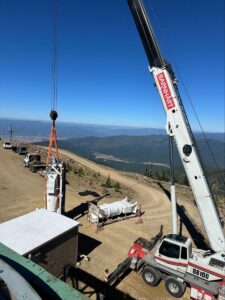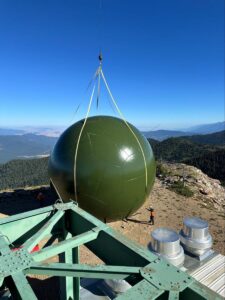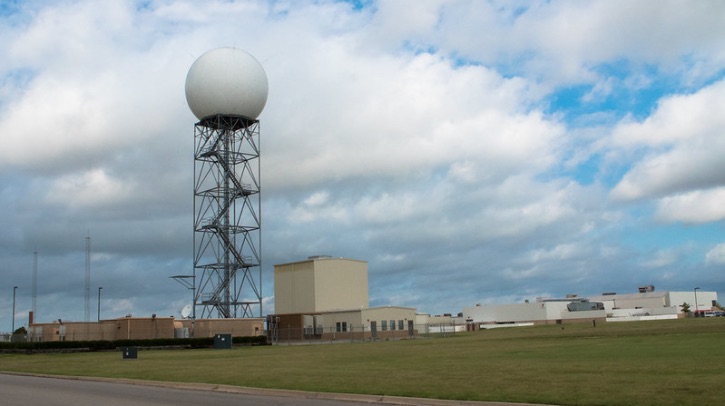The Radar Operations Center has completed a US$150m, nine-year Service Life Extension Program (SLEP) that extends the lifespan of the 159 weather radars that make up the USA’s next-generation weather radar network (NEXRAD).
Enhanced weather warnings

Credit: NOAA
The upgraded radars are expected to improve the National Weather Service’s ability to warn its communities of severe and hazardous weather and save lives and property.
With the refurbishment of the radar pedestal in Missoula, Montana, earlier this month, all 122 National Weather Service NEXRAD systems have been fully upgraded. Additionally, 37 NEXRAD systems owned and maintained by the Federal Aviation Administration (FAA) and the Department of Defense have also been upgraded, completing the upgrade of the entire weather radar network.
“We have improved our radar network by eliminating obsolete items while investing in new technology,” said Terry Clark, radar operations center director at the National Weather Service. “We are already seeing the positive results of this project in reduced life-cycle costs due to less maintenance needs. An added bonus is that we are maintaining radar availability at a high level after trending down prior to the upgrades, and the number of parts needing to be replaced has decreased by approximately 50% since 2018.”
Radar network upgrade
Technicians repaired and refurbished major components to extend the operability of the radars beyond 2035 in a project that was completed on time and under budget. The service life extension program included five major upgrades.

The first of these was the digital signal processor refresh – the computer equipment that controls the radar and processes the radar data was modernized. The second was the transmitter refresh, in which the transmitter components were redesigned and all infrastructure wiring was replaced to improve reliability and maintainability. Thirdly, the organization completed the pedestal refurbishment, where all moving components in the radar pedestal that rotates the radar dish were inspected and replaced or refurbished. Following this, the shelters that house the radar and generator equipment were refreshed with new paint, seals and doors as needed. Finally, the emergency generator, which is used to keep the radar running in the event power is lost, was replaced to meet compliance with EPA guidelines and address emerging obsolescence.
NEXRAD technology was developed in the 1980s and built in the 1990s. While incremental upgrades and modernization have occurred in the last 20 years, this SLEP effort addressed the major components that had not been updated, were obsolete, or required additional refresh of technology. These SLEP upgrades will ensure the radar’s reliability, maintainability and availability into the next decade.
To ensure the reliability of weather radar technology beyond the next decade, NOAA is developing requirements for Radar Next. This program will identify and deploy the next generation of radar coverage to improve public safety, enhance disaster preparedness and advance scientific research and climate studies.
To find out more about the US$465,000 of aircraft-based weather sensors and related technology that NOAA purchased from Flyht Aerospace Solutions to improve the US National Weather Service’s weather forecasting and warnings, click here.



